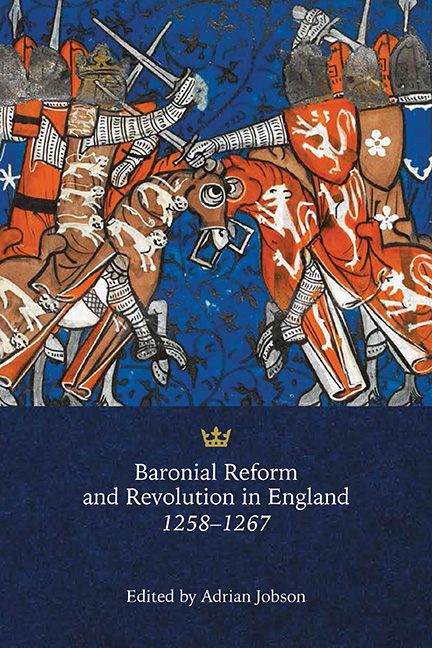35 results
Replacement dynamics and the pathogenesis of the Alpha, Delta and Omicron variants of SARS-CoV-2
-
- Journal:
- Epidemiology & Infection / Volume 151 / 2023
- Published online by Cambridge University Press:
- 20 December 2022, e32
-
- Article
-
- You have access
- Open access
- HTML
- Export citation
High Resolution X-Ray Spectra for Chemical Speciation in the SEM
-
- Journal:
- Microscopy and Microanalysis / Volume 27 / Issue S1 / August 2021
- Published online by Cambridge University Press:
- 30 July 2021, pp. 1360-1363
- Print publication:
- August 2021
-
- Article
-
- You have access
- Export citation
Canine vector-borne disease: mapping and the accuracy of forecasting using big data from the veterinary community
- Part of
-
- Journal:
- Animal Health Research Reviews / Volume 20 / Issue 1 / June 2019
- Published online by Cambridge University Press:
- 26 September 2019, pp. 47-60
-
- Article
-
- You have access
- Open access
- HTML
- Export citation
3373 Modulation of Hedgehog Signaling Alters Immune Infiltration in Pancreatic Cancer
-
- Journal:
- Journal of Clinical and Translational Science / Volume 3 / Issue s1 / March 2019
- Published online by Cambridge University Press:
- 26 March 2019, p. 16
-
- Article
-
- You have access
- Open access
- Export citation
The diagnostic accuracy of a point-of-care ultrasound protocol for shock etiology: A systematic review and meta-analysis
-
- Journal:
- Canadian Journal of Emergency Medicine / Volume 21 / Issue 3 / May 2019
- Published online by Cambridge University Press:
- 30 January 2019, pp. 406-417
- Print publication:
- May 2019
-
- Article
-
- You have access
- HTML
- Export citation
Statement on Minimum Standards for the Care of Older People in Emergency Departments by the Geriatric Emergency Medicine Special Interest Group of the International Federation for Emergency Medicine – ERRATUM
-
- Journal:
- Canadian Journal of Emergency Medicine / Volume 21 / Issue 5 / September 2019
- Published online by Cambridge University Press:
- 16 March 2018, E7
- Print publication:
- September 2019
-
- Article
-
- You have access
- HTML
- Export citation
Statement on Minimum Standards for the Care of Older People in Emergency Departments by the Geriatric Emergency Medicine Special Interest Group of the International Federation for Emergency Medicine
-
- Journal:
- Canadian Journal of Emergency Medicine / Volume 20 / Issue 3 / May 2018
- Published online by Cambridge University Press:
- 23 January 2018, pp. 368-369
- Print publication:
- May 2018
-
- Article
-
- You have access
- HTML
- Export citation
Case 3 - The Geriatric Emergency Department
-
-
- Book:
- Value and Quality Innovations in Acute and Emergency Care
- Published online:
- 04 July 2017
- Print publication:
- 21 March 2017, pp 82-90
-
- Chapter
- Export citation
Index
-
- Book:
- Baronial Reform and Revolution in England, 1258-1267
- Published by:
- Boydell & Brewer
- Published online:
- 21 May 2021
- Print publication:
- 21 October 2016, pp 259-284
-
- Chapter
- Export citation
Dedication
-
- Book:
- Baronial Reform and Revolution in England, 1258-1267
- Published by:
- Boydell & Brewer
- Published online:
- 21 May 2021
- Print publication:
- 21 October 2016, pp v-vi
-
- Chapter
- Export citation
Contents
-
- Book:
- Baronial Reform and Revolution in England, 1258-1267
- Published by:
- Boydell & Brewer
- Published online:
- 21 May 2021
- Print publication:
- 21 October 2016, pp vii-viii
-
- Chapter
- Export citation
Acknowledgements
-
- Book:
- Baronial Reform and Revolution in England, 1258-1267
- Published by:
- Boydell & Brewer
- Published online:
- 21 May 2021
- Print publication:
- 21 October 2016, pp x-x
-
- Chapter
- Export citation
List of Illustrations
-
- Book:
- Baronial Reform and Revolution in England, 1258-1267
- Published by:
- Boydell & Brewer
- Published online:
- 21 May 2021
- Print publication:
- 21 October 2016, pp ix-ix
-
- Chapter
- Export citation
List of Abbreviations
-
- Book:
- Baronial Reform and Revolution in England, 1258-1267
- Published by:
- Boydell & Brewer
- Published online:
- 21 May 2021
- Print publication:
- 21 October 2016, pp xi-xiv
-
- Chapter
- Export citation
Frontmatter
-
- Book:
- Baronial Reform and Revolution in England, 1258-1267
- Published by:
- Boydell & Brewer
- Published online:
- 21 May 2021
- Print publication:
- 21 October 2016, pp i-iv
-
- Chapter
- Export citation

Baronial Reform and Revolution in England, 1258-1267
-
- Published by:
- Boydell & Brewer
- Published online:
- 21 May 2021
- Print publication:
- 21 October 2016
172 - Candidiasis
- from Part XXII - Specific organisms: fungi
-
-
- Book:
- Clinical Infectious Disease
- Published online:
- 05 April 2015
- Print publication:
- 23 April 2015, pp 1104-1112
-
- Chapter
- Export citation
Cerebrospinal Fluid Oxytocin Levels in Trichotillomania
-
- Journal:
- CNS Spectrums / Volume 3 / Issue 9 / October 1998
- Published online by Cambridge University Press:
- 07 November 2014, pp. 52-55
-
- Article
- Export citation
32 - Falls and fall prevention in the elderly
- from Section 4 - Special topics
-
-
- Book:
- Geriatric Emergency Medicine
- Published online:
- 05 January 2014
- Print publication:
- 16 January 2014, pp 343-350
-
- Chapter
- Export citation
Contributors
-
-
- Book:
- Geriatric Emergency Medicine
- Published online:
- 05 January 2014
- Print publication:
- 16 January 2014, pp vii-x
-
- Chapter
- Export citation



